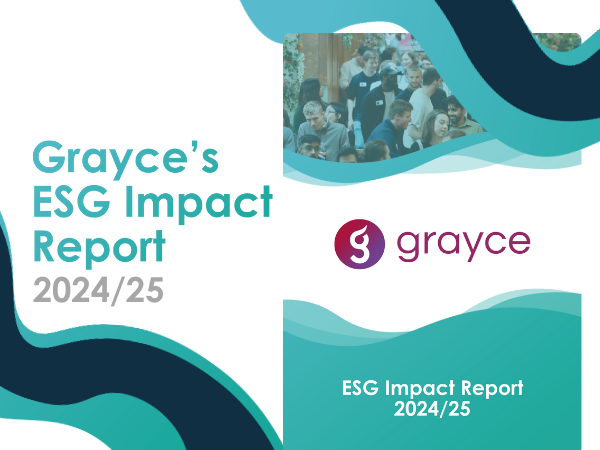
The Rise of Product-Led Organisations: Why Talent is the Key to Success
There is a seismic shift underway in how organisations are responding to today’s fast-paced digital economy, as businesses compete for attention. Traditional approaches are being challenged by the rise of a newer model: product-led growth. Centred around the user experience and the problems they need help with, organisations create a standout product, and the business follows. The buyer journey now drives the journey, and they engage on their own terms. This approach puts the product at the heart of strategy, driving customer acquisition, retention, and expansion through intuitive design, seamless onboarding, and real-time value delivery.
Why is product-led growth gaining momentum?
Driven by digital convenience, shorter attention spans, and the rise of on-demand platforms, consumer demand is evolving towards more instant value, frictionless experiences, and self-service capabilities. Product-led strategies tackle modern customer expectations head-on.
The SaaS sector has been a trailblazer in this space, with companies like Slack, Zoom, and Dropbox proving that products can sell themselves. These organisations have demonstrated that superior user experience and value delivery can drive organic growth, reduce customer acquisition costs, and increase lifetime value.

A short history of the product-led growth landscape
Product-led growth has been reshaping business for over a decade. Early pioneers like Dropbox popularised freemium models, letting users experience value before paying. By the late 2010s, companies such as Zoom proved that even complex solutions could scale
through intuitive product experiences and not just through traditional sales. Today, PLG is everywhere. Agility, hyper-personalisation, and data-driven decisions are becoming increasingly essential to remain competitive. From insurance to energy, PLG is driving
self-service engagement and embedding product thinking across UX, onboarding, and go-to-market strategies.
The opportunities that come with leveraging data and AI
Data, especially together with AI, is opening up massive opportunities for growth. At recent conferences, we’ve heard everyone from insurers to banks sharing ideas and use cases around using data to make their products user-focused and responsive. Re
al-time insights and predictive analytics let businesses understand what users want and deliver it instantly. The key is helping customers see a product’s value quickly, and data makes that possible. By analysing usage patterns, like what drives conversions, upsells, or, pivotally, where funnels drop off, you can identify friction and recommend features that smooth the journey.
The result is a better experience for future users and higher conversions tomorrow.
Although access to a wealth of quality customer data is an undeniable strength, analysing it to make powerful product decisions can be slow and overwhelming, and that’s where AI steps in. AI not only can analyse usage patterns and conversion data - it can personalise content, spot friction points, and even suggest helpful resources to users in real-time. This means product teams are not guessing where to focus; AI shows whether to improve what you’ve already built or prioritise a feature on your roadmap. AI creates a continuous cycle of insight, action, and optimisation, all powered by your data.
Talent: The Engine Behind Product-Led Success
We’ve talked about how strategy and technology are critical, but the right skills to deliver sits at the heart of both: it’s what makes them work. Moving from project-led to product-led models isn’t just a process change, but a cultural shift that demands cross-functional
collaboration, agile delivery, and continuous learning.
The challenge? Many organisations face serious skills gaps. Mercer’s Global Talent Trends report shows that one of the biggest risks to growth in 2025 is reskilling and upskilling to keep pace with evolving customer demands, new business models,
and transformative tech. The need to build future-ready teams is still pressing, but this is a risk well within organisations’ control. By investing in talent that can adapt and innovate, they can drive product-led success.
Gen Z, set to make up nearly 30% of the global workforce by the end of 2025, brings a digitally native mindset and a natural affinity for tech and AI. Organisations that harness this potential will be better positioned to navigate the complexities of PLG. At Grayce, our Analysts are working in product roles, trained in skills from product thinking and agile delivery to AI and stakeholder engagement, enabling organisations to build the internal capability needed to thrive in a product-led world. We’re seeing first-hand the benefits of shifting to product-led strategies.
Grayce in Action: Delivering Results for Product-Led Organisations

Case Study: Empowering a Leading Global Payments Organisation
Grayce is supporting organisations’ product-led growth strategies with the right skills and high-calibre talent expertly matched to the client’s needs. Our Analysts are embedded within client teams to accelerate transformation and deliver measurable results.
Driving Real Business Outcomes
Grayce Analysts are playing a pivotal role at a leading global payments organisation, supporting the development and implementation of an advanced internal automation system for perpetual Know-Your-Customer processes. This initiative is critical for ensuring ongoing regulatory compliance and operational efficiency; a dynamic solution, where third-party sources alert their client in near real-time whenever there are changes related to a customer.
Our Analysts are contributing towards the high-level management and facilitation of the creation, development, implementation and deployment of the product:
- Analysing Data for Actionable Insights: Identifying trends and opportunities for improvement, enabling the client to make informed, data-driven decisions.
- Defining Features and User Stories: Working closely with stakeholders, translating business needs into clear, actionable requirements, and ensuring the product delivers real value to end users.
- Coordinating Cross-Functional Teams: By facilitating communication and collaboration across engineering, design, and business functions, helping to maintain momentum and alignment.
- Knowledge Sharing and Communication: Regular engagement with stakeholders ensures clear communication of new concepts and updates for wider business alignment.
- Skills That Make a Difference
Grayce Analysts bring a unique blend of skills that are essential for product-led success:
- Stakeholder Engagement: Building strong relationships with diverse stakeholders, communicating clear product developments, facilitating meaningful discussions, and capturing essential feedback.
- Agile Delivery: Collaborating through weekly standups, syncs, sprint planning, backlog refinement and PI Planning, and applying frameworks like SAFe Agile to drive rapid iteration and adaptability.
- Data Analysis: Generating insights that guide the team in prioritising features and user stories, focusing on those with the highest volume or impact.
- Continuous Learning: Leveraging Grayce’s development programmes and knowledge exchanges to stay ahead of industry trends.
Measurable Impact
The results speak for themselves:
- Real-time compliance updates, reducing manual effort and the need for direct merchant contact.
- Greater organisational operational efficiency, better positioned to adapt to evolving regulations.
- Client feedback has been overwhelmingly positive, with assignment leads stating they would “gladly clone” a Grayce Analyst to multiply their impact.
Product-led growth isn’t just about great products - it’s about the right mix of strategy, technology, and talent. Data and AI unlock opportunities, but skilled people turn insights into action. Organisations that invest in future-ready talent will lead the way - delivering products that adapt, innovate, and drive growth.
Ready to embed product-centricity into your strategy or build a future-ready workforce? Grayce offers a scalable, low-risk solution. Find out more about our solutions here.





